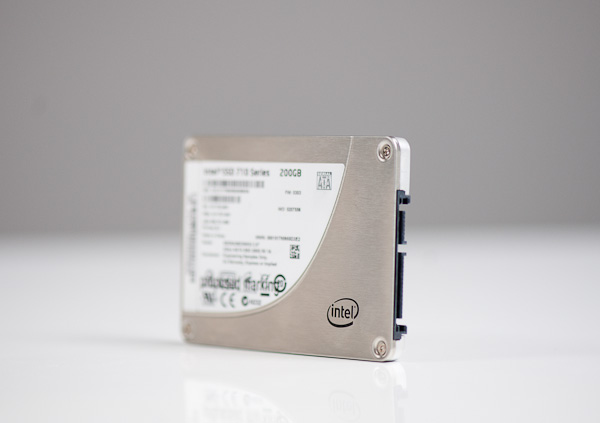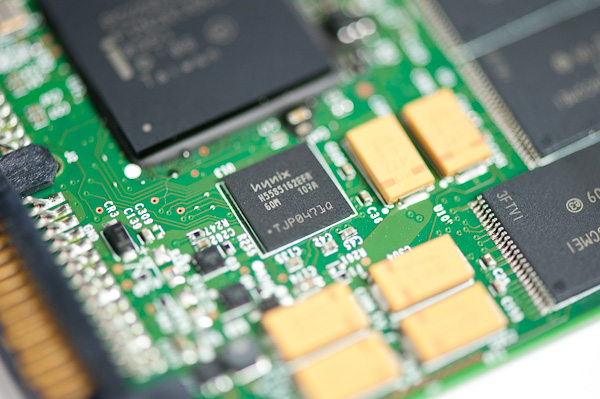The Intel SSD 710 (200GB) Review
by Anand Lal Shimpi on September 30, 2011 8:53 PM EST- Posted in
- Storage
- SSDs
- Intel
- Intel SSD 710
Final Words
When I first ran through the performance data of the 710 I came away disappointed. As a desktop user the 710 offers lower performance than the Intel SSD 320 at a significantly higher price. Thankfully, Intel's focus for this drive is on the enterprise market and here the 710 does a lot better. Our SQL tests showed the 710 offering similar performance to the outgoing X25-E. It was in our Oracle OLTP benchmark that the older SLC drive was able to offer a 25% increase in throughput over the new MLC-HET solution. No matter how you look at it, small file random write performance is just tough to beat on SLC NAND. I suspect for many enterprise workloads however, the 710 could be a drop-in replacement for the X25-E. In the cases where it isn't as fast, the margins are significant but overcomable by upping the number of drives in the RAID array. This isn't the ideal solution but the cost savings alone (compared to the X25-E) should make the move to the 710 worth it. If you don't need additional capacity however and are running a write intensive OLTP workload, the 710 will likely do nothing for you.
Intel's SSD 710 appears to be targeted squarely at existing X25-E customers or companies who needed the endurance of the X25-E but at larger capacities. In fact we have a number of X25-Es deployed in our servers that I wouldn't mind moving to 710s simply because of the capacity increase. Most of our servers don't need a ton of space, but with DB sizes in the hundreds of GBs even a large array of 64GB drives doesn't give you all that much space for growth (especially if you're replicating data across SSDs for redundancy). For these uses, the 710 appears to be a success.
The big question for enterprise customers is whether or not you need the additional cycling offered by the 710. To know for sure you'll really have to do a lot of profiling of your own workload. I suspect Intel's SSD 320 would do just fine in a number of situations, particularly if you significantly increase the spare area on the drive (e.g. to 50%).
Where the 710 leaves me wanting more is that it doesn't actually move the performance bar up at all. At best Intel is able to deliver the same performance it did nearly three years ago with the X25-E. While it is true that customers moving from spindles to SSDs will likely be just fine with the 710's level of performance, I would like to see more. To date Intel hasn't delivered a 6Gbps SATA SSD based on its own controller. I suspect that's a big part of why we're not seeing better performance out of the 710. Intel is likely unwilling to try a third party controller in the enterprise space (can't blame them) so instead we get the 710: a decent performer with Intel's reputation for reliability. Should SandForce be able to convince customers that its solutions are just as reliable however, Intel could have a real problem in the enterprise space.












68 Comments
View All Comments
igf1 - Saturday, October 1, 2011 - link
My God, how did the vertex 3 get so far ahead of the pac?Broheim - Saturday, October 1, 2011 - link
how could a SATA 6GB/s drive possibly be faster than a bunch 3GB/s drives? oh wait...floam - Saturday, October 1, 2011 - link
How well should this drive do without TRIM? I imagine this is somewhat important to those doing RAIDs. Or in my case, just holding one big giant VHD file.inplainview - Saturday, October 1, 2011 - link
Anand,Start charging for access to your site and see how many of the hardcore keyboard banging, momma's basement dwellers will actually fork over cash to keep things here uber-techie. I can appreciate the work that you're doing even if it not as nuts and bolts as some would like. I've gleaned valuable info that has helped me to make some informed purchases that I am quite happy with. For that I think you.
mmrezaie - Saturday, October 1, 2011 - link
What I really like to see in these SSDs is the impact of encryption. Not just hardware level, but software solutions from both windows, and Linux. it seems that they are getting more and more important these days.Ushio01 - Saturday, October 1, 2011 - link
Anand since you now have an enterprise storage bench will you be reviewing the Micron RealSSD P300 and P400e SSD's especially the P300 as it uses SLC nand with a 6.0 Gb/s controller.tipoo - Saturday, October 1, 2011 - link
What kind of mic that is.geok1ng - Saturday, October 1, 2011 - link
is thesse drive have 40%+ spare area, then cost per GB is actually $3 to $4, Inline with premium market.And there is already a ssd that uses 50% spare area, the cache oriented OCZ Nocti, that i would like to see a review, compared with 20gb 311 series, 40g Corsair F40 and Crucial m4 64GB.
sheh - Saturday, October 1, 2011 - link
200GB != 200,000,000,000,000 bits200GB == 200,000,000,000 bytes
---
Data retention always worried me. Is that 1 year retention for consumer drives only once it's exhausted its writable days or also for brand new?
Do drives refresh themselves or is there a need to do a read-rewrite everything once in a while?
freespace303 - Saturday, October 1, 2011 - link
Where are the Crucial drives on here? I have one and would love to see how they stack up against these new Intel drives.